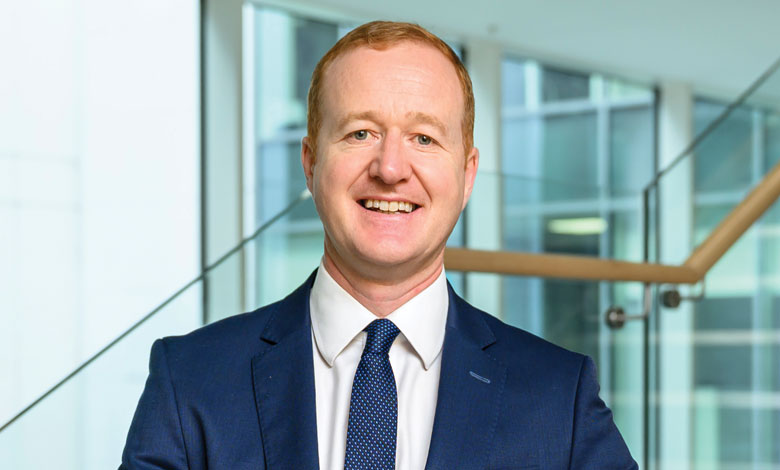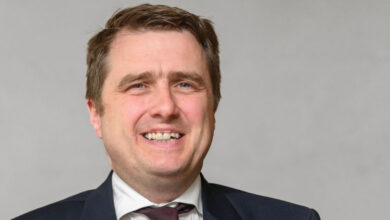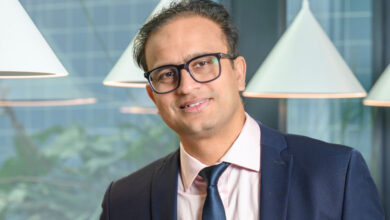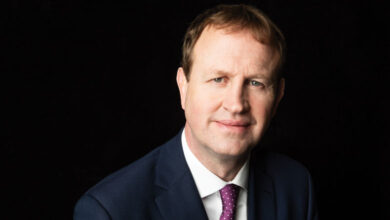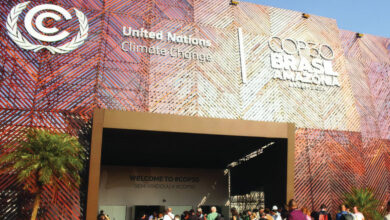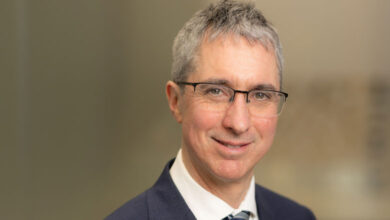Driving Ireland’s energy transition
Sustainable Energy Authority of Ireland (SEAI) Chief Executive William Walsh speaks to eolas Magazine about the organisation’s expanding role in driving the decarbonisation of Ireland’s energy system, the scaling of retrofit and solar programmes, the importance of electrifying transport, reducing car dependency, and decarbonising industry, all to achieve a 51 per cent reduction in Ireland’s energy-related emissions by 2030.
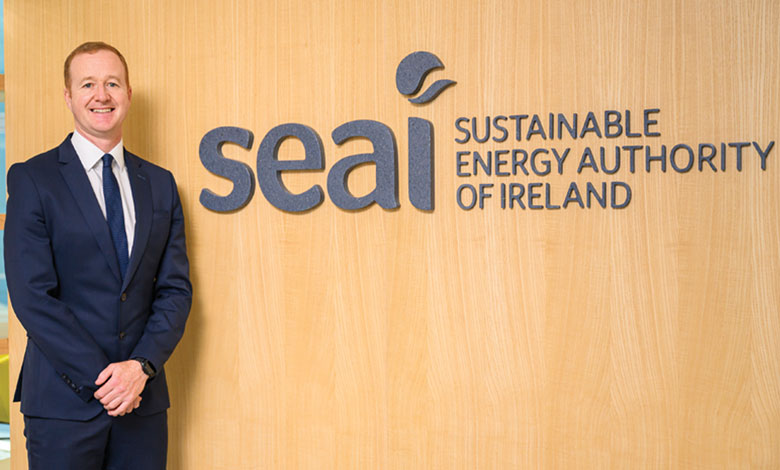 Since joining SEAI in 2013, Walsh has contributed to the evolution of Ireland’s national energy authority from a relatively peripheral body to one that plays a central role in the State’s decarbonisation efforts. “Back then, SEAI was a ‘nice-to-have’. Now, it is very much a ‘must-have’,” he reflects.
Since joining SEAI in 2013, Walsh has contributed to the evolution of Ireland’s national energy authority from a relatively peripheral body to one that plays a central role in the State’s decarbonisation efforts. “Back then, SEAI was a ‘nice-to-have’. Now, it is very much a ‘must-have’,” he reflects.
That transformation has been underpinned by significant growth supported by government. “In 2018, we had around 90 staff and a budget of €150 million. In 2025, we have over 250 staff and a budget of approximately €800 million,” Walsh explains. “This reflects not only our expanded remit, but also the increasing importance of the energy transition to Ireland.”
SEAI’s role has been reinforced by national legislation committing to a 51 per cent reduction in emissions by 2030 and the establishment of carbon budgets and sectoral ceilings. Walsh notes that energy transition efforts are now “measured and managed”, supported by a maturing energy industry and improved cross-sectoral collaboration.
SEAI’s roles are multi-faceted, from helping all energy users to save money and move away from fossil fuels with practical advice and financial supports, to providing objective data and evidence to inform policy development.
Progress
Outlining progress, Walsh points to advances in residential retrofits and commercial solar, electric vehicles, and energy efficiency. He particularly emphasises the societal impact of domestic solar energy: “It has helped people understand energy. That awareness makes the wider transition – away from fossil fuels and towards renewables – more accepted and better understood.”
SEAI’s strategic approach is defined by five key pillars which Walsh describes as necessary for delivering 90 per cent of the energy-related emissions reductions required by 2030:
- decarbonising industry;
- expanding wind and solar and strengthening the grid;
- electrifying transport;
- scaling retrofit, heat pump adoption, and district heating; and
- reducing car dependency.
- “These are our five actions for 90 per cent,” Walsh explains. “They are the areas with the greatest potential for emissions savings. Our job is to keep the focus on them.”
Affordability and community engagement
Energy affordability is a constant priority. While SEAI is not responsible for setting energy prices, it works to reduce costs for consumers through energy efficiency. “Through the Warmer Homes Scheme we deliver home energy upgrades to vulnerable homeowners in energy poverty. Their homes are more comfortable, use less energy, and thus they cost less to run,” Walsh says.
SEAI also supports over 1,000 sustainable energy communities across Ireland. These networks help homeowners, small businesses, and organisations take collective action through enhanced insulation, retrofitting, and renewable generation.
“We want communities to reap the dividend of working together,” he adds. “Whether it is retrofitting a sports club or providing energy efficiency advice to a local business, these programmes help make the transition more inclusive, meaningful, and achievable.”
Retrofitting and regulation
Walsh highlights the dual impact of building regulations: “They ensure that new homes are built to high energy standards, while also supporting the development of a supply chain for retrofit technologies like heat pumps.”
In 2024, SEAI supported the retrofit of 54,000 homes. The 2025 target is 63,000. “As we scale up, we bring expertise into the market, and that is making retrofitting more effective and more affordable,” Walsh says. “The end result is warmer, healthier, and more comfortable homes; and last year home energy upgrade activity supported more than 10,000 jobs, so it is an increasingly significant component of Ireland’s workforce.”
District heating
While at a nascent stage of development in Ireland, district heating is identified by Walsh as a significant opportunity. “Over 90 per cent of our heating still comes from fossil fuels. That is the single biggest challenge,” he explains. “District heating works well in comparable countries. The challenge here is low deployment.”
Recent developments, including government approval for the General Scheme of the Heat (Networks and Miscellaneous Provisions) Bill 2024 and a €5 million government allocation for feasibility studies, are a clear signal of growing support for developing district heating networks. Furthermore, SEAI now leads the National District Heating Centre of Excellence.
“The technology is available, insulated piping, low heat loss, and diverse heat sources, but we need anchor tenants to make it viable,” he says. He cites the potential of the Ringsend Waste-to-Energy facility as a future district heating hub for parts of Dublin.
“We can meet the energy challenge with focus, collaboration, and a shared commitment.”
William Walsh, Chief Executive, Sustainable Energy Authority of Ireland
Collaboration
“The public sector has to lead by example,” Walsh says. SEAI works with around 350 public bodies on energy performance and collaborates with large users such as hospitals and schools through pathfinder projects aimed at decarbonising existing building stock.
SEAI also oversees administration of the Energy Efficiency Obligation Scheme, which requires energy suppliers to assist their customers in improving efficiency. “The suppliers have been proactive. Some have even established retrofit divisions, which we encourage and welcome.”
Infrastructure and innovation
From an infrastructure perspective, Walsh identifies several priorities. “We need to dramatically accelerate the pace of onshore and offshore wind deployment, ensure that the electricity grid can handle it, and build out storage solutions. Interconnection is also crucial – the Celtic Interconnector is a significant development.”
While Ireland has an enormous renewable energy potential, Walsh warns that “deployment remains too slow” and calls for a continued focus on pragmatically addressing planning and regulatory barriers.
Artificial intelligence (AI) is on SEAI’s radar as a potential accelerator of the transition. “We hold significant BER datasets, on over one million homes, which could be used alongside those covering national energy use. There is clear opportunity for AI to support homeowners in their decision-making and delivery,” Walsh says.
At the same time, he acknowledges AI’s growing energy footprint. “We must balance the benefits of deployment with the energy it consumes. AI is not a silver bullet, but it is developing fast and has the potential to contribute to Ireland’s energy transition. We are examining where it can add the most value while mitigating any associated risks.”
Concluding, Walsh emphasises that the energy transition, in addition to being a climate imperative, remains both an economic and a social opportunity.
“People are not just engaging for environmental reasons. Businesses want to control overheads and homeowners want warmer homes. These are the real-world drivers.
He notes that Ireland currently spends billions of euros annually on the importation of fossil fuels. “We can generate that energy indigenously and eventually export it. That is the dividend, not just improved energy security, but economic opportunity.
“A decarbonised Ireland will mean warmer homes, cleaner air, cheaper and more secure energy in a prosperous, resilient economy. We must stay the course. The opportunity is there, and the path is clear. It is a challenge, but it is one we can meet with the right focus, the right collaboration, and a shared commitment to delivery.”

